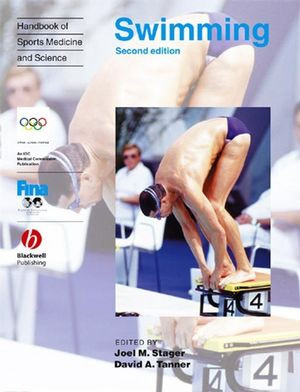

Most ebook files are in PDF format, so you can easily read them using various software such as Foxit Reader or directly on the Google Chrome browser.
Some ebook files are released by publishers in other formats such as .awz, .mobi, .epub, .fb2, etc. You may need to install specific software to read these formats on mobile/PC, such as Calibre.
Please read the tutorial at this link: https://ebookbell.com/faq
We offer FREE conversion to the popular formats you request; however, this may take some time. Therefore, right after payment, please email us, and we will try to provide the service as quickly as possible.
For some exceptional file formats or broken links (if any), please refrain from opening any disputes. Instead, email us first, and we will try to assist within a maximum of 6 hours.
EbookBell Team

5.0
68 reviewsIt presents current sports science knowledge specifically relevant to coaching swimmers at club, county or national level. Covering characteristics of swimming including important concepts in propulsion, functional anatomy, physiology, biochemistry, biomechanics and psychology.
The Handbooks of Sports Medicine and Science present basic clinical and scientific information in a clear style and format as related to specific sports events drawn from the Olympic Summer and Winter Games. Each Handbook is written by a small team of authorities co-ordinated by an editor who has international respect and visibility in the particular sport activity. Their charge is to present material for medical doctors who work with athletes, team coaches who have academic preparation in basic science, physical therapists and other allied health personnel, and knowledgeable athletes. Each volume represents up-to-date information on the basic biology of the sport, conditioning techniques, nutrition, and the medical aspects of injury prevention, treatment, and rehabilitation.Content:
Chapter 1 Energy Systems (pages 1–19): Joel M. Stager and Michael A. Coyle
Chapter 2 Central Adaptations: Heart, Blood, and Lung (pages 20–34): Joel M. Stager
Chapter 3 Peripheral Adaptations: The Skeletal Muscles (pages 35–50): Joel M. Stager
Chapter 4 The Mechanics of Swimming (pages 51–58): Barry S. Bixler
Chapter 5 Resistance and Propulsion (pages 59–101): Barry S. Bixler
Chapter 6 Psychology (pages 102–114): John S. Raglin and Brendon S. Hale
Chapter 7 Medical Issues Related to Swimming (pages 115–127): David F. Gerrard
Chapter 8 Training and Testing of Competitive Swimmers (pages 128–143): David B. Pyne and Wayne M. Goldsmith